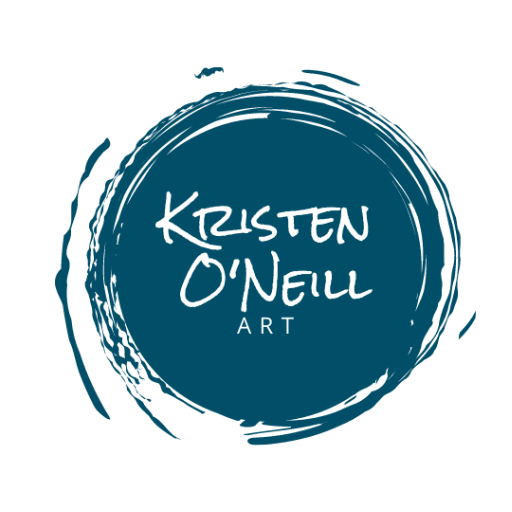While landscapes may hold still for us to paint them, the weather doesn’t always. It can be tons of fun to have an active weather day for subject matter, but you may need to rapidly get your ideas captured before you blink and everything changes. Knowing how to paint fog and mist can help you accomplish your goal. Allowing you to add in believable details later. It can also create interest and help simplify an area of the painting that may be too busy with details. And, it is incredibly fun to paint.

Depending on your painting style, you could approach fog a few different ways. One would be alla prima (wet on wet) – the just going for it style of laying down the final color while the underlayers are still wet. Another way to create mist is to glaze on top of a section of the painting. Glazing is best done when the previous layer has had a chance to dry. It is an application of thin paint. “Thick over thin” rule teaches us to not glaze delicate layers over thicker paint because it can crack while everything fully dries. This is not the biggest deal with acrylic, since things dry fast, but can really cause issues with slow-drying oil.
If you are not familiar with the roles of Titanium and Zinc white paints, head over to this blog post to find out the difference. (Or see the video version on YouTube here.)
For the direct painting technique, Titanium will be your choice of white. Remember to add other colors to it (slowly!) to create off-white, and more realistic clouds. If it is sunrise or sunset, you get to add fun colors into it. (Yay!)
For glazing you will want three things. Zinc white, a soft brush, and a glazing medium. Which glazing medium depends on which type of paint you are using. For example, for use with oil paints, Windsor & Newton sell “Liquin” which can be used for glazing and doesn’t yellow. It also speeds the drying, which can help you get to another layer of glazing sooner. You can use refined linseed oil. You can use something like Gamblin’s Galkyd Mediums (alkyd resin painting medium). They thin oil colors and have a viscosity like linseed stand oil. Gamsol odorless mineral spirits are good to use, as well as a thinning agent to the Galkyd.
I do not recommend odorless turpentine for three reasons. First, turpentine is what we clean our brushes with, right? That is because it breaks down the paint. If you use it to increase viscosity, at certain point it crosses the line and destroys your paint. Secondly, odorless things don’t alert you that you have filled up your studio with toxic air. You have removed the canary from the coal mine. And third, toxic! Why have that when you don’t need it. We have to be smart with a wide variety of pigments, but let’s make our life easier, not harder where we can.
As you may know, I like to use Golden’s Acrylic line OPEN, which is their slow drying acrylics. Golden has a product called “Thinner” designed to go with their OPEN line. This with Zinc white can make very thin layers. Allow lots of drying time as it can be tacky to the touch for a while. Keeping the studio warm will help it dry. (Usually not a problem, but in the Pacific Northwest in the winter it can become a slow to never drying adventure if you are putting up with a cold studio.)

This is a photo I took of the amazing mist in the winter between hills in Southern Oregon in December. In the red circle, this is an area where the mist has almost uniformly changed the value of the trees. Here, mixing color and then adding Titanium white could get this effect easily. In the yellow rectangle, this is an area where I would use Zinc white to paint fog, and more of a glazing approach to create the wisps of mist. The best part in this composition is that the fog helps creates separation between the foreground and middle ground. It allows a lot of contrast to create interest tree shapes in the foreground.
What are your favorite ways to paint fog and mist?
